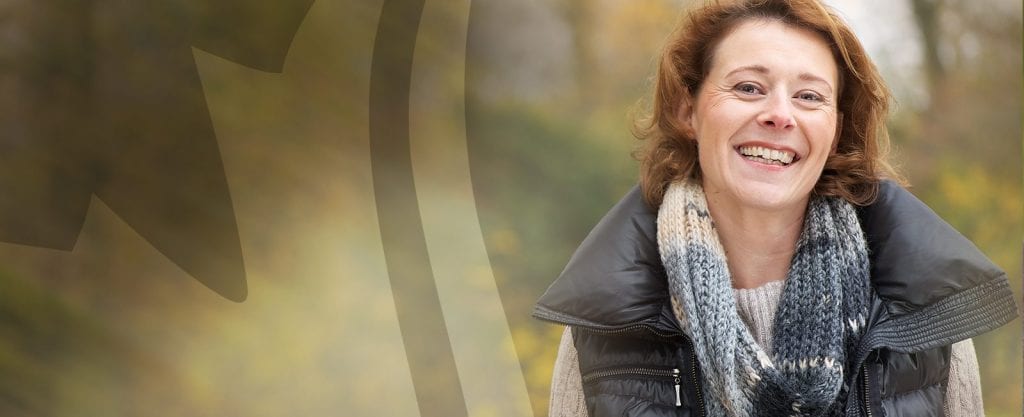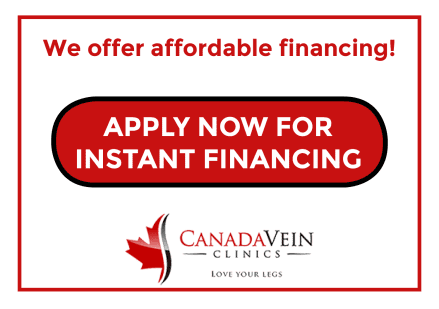 Welcome to the FAQ section. This is where you will find answers to many of the most common questions we receive at Canada Vein Clinics. Any other questions can be answered by giving us a call at 1-888-876-8346, or can be addressed during your consultation.
Welcome to the FAQ section. This is where you will find answers to many of the most common questions we receive at Canada Vein Clinics. Any other questions can be answered by giving us a call at 1-888-876-8346, or can be addressed during your consultation.
Q: How common are varicose veins?
Approximately half of the population has some form of venous disease while varicose veins affect one out of two people age 50 and older, and 15-25% of all adults. On average 18% of men and 25% of women develop varicose veins. Varicose veins are one of the most common venous issues affecting the world today.
Q: What causes varicose veins?
Varicose veins occur when veins do not properly return blood from the lower leg to the heart. All veins have valves that open to allow the flow of blood to the heart and close to prevent backflow (otherwise know as “reflux”) of blood to the foot. When valves fail to function properly, blood leaks through and flows down the leg in the wrong direction. The blood overfills and distends the superficial veins under the skin, resulting in the bulging that you see in varicose veins. Click here to read more about the cause of varicose veins.
Q: Is it necessary to seek treatment for my vein problems?
Yes! Most of our patients come to us because they find their spider veins and varicose veins to be unsightly and uncomfortable. However, it is important to seek treatment for vein conditions regardless of the cosmetic benefits of our procedures, as they can be signs of more serious deep vein disease issues and can lead to serious medical complications, including ulcers, bleeding, infection and blood clots. As a precaution, we screen all of our patients before treatment of varicose and spider veins for these issues and treat them safely and effectively.
Q: What are some of the symptoms of varicose veins?
Here are some other physical symptoms of varicose veins that make them easier to diagnose:
- Itchy or flaky skin around the affected vein, sometimes accompanied by a burning sensation
- Feeling of heaviness in the lower legs after standing or sitting for long periods of time
- Aching in the lower leg area without relief
- Muscle cramps or pain in the lower legs
- Moderate to severe swelling around the ankles – the ankle area appears puffy and swollen, and the ankle bone may not be visible
Not all of these symptoms are present in every case. However, if your veins fit the above description and you have one or more of these symptoms, it is likely you have varicose veins. These symptoms can take a toll on your quality of life, making it hard to do things like walking or even standing for long periods.
Fortunately, modern treatments have made it so you don't have to live with varicose veins anymore. Canada Vein Clinics is the leading clinic for varicose and spider vein treatment in Canada.
Fortunately, modern treatments have made it so you don't have to live with varicose veins anymore. Canada Vein Clinics is the leading clinic for varicose and spider vein treatment in Canada.
Q: What are the symptoms of venous insufficiency?
You may be suffering from any level of venous insufficiency if you are experiencing one or any of the following symptoms:
- Dull aching, heaviness, or cramping of the legs
- Itching and tingling
- Pain that gets worse when standing
- Pain that gets better when legs are raised
- Swelling of the legs
- Redness of the legs and ankles
- Skin color changes around the ankles
- Skin discoloration (bluing and browning of the skin)
- Thickening and hardening of the skin on the legs and ankles
- Ulcers on the legs and ankles
- Restless legs
All the above symptoms, as well as many others, can be caused by abnormal circulation in the veins of the lower extremities. This is a condition called “venous insufficiency.”
Q: How do I know if I have venous insufficiency?
If you're feeling achy, crampy, itchy, or just plain tired in your legs, it might be vein insufficiency! Luckily, your CVC physician can easily test for this issue and figure out if that's the case. Keep an eye out for the size and color of your veins to spot the issue sooner, but don't worry if you can't see them - your doc has got you covered!
Q: What are the different types of vein insufficiency?
Spider veins are little squiggly lines that are usually seen on skin, but can sometimes cause a big ouch! While many people seek treatment for spider veins for cosmetic reasons, spider veins can also result in substantial discomfort, ultimately requiring therapy.
Varicose veins, on the other hand, are like big, ropey lumps that can really grow and hurt if left untreated. Thankfully, there are plenty of treatments out there to help, so don't worry - your doctor can help you figure out what's best for you!
Q: Can venous insufficiency be prevented?
Generally, no. If you have a family history of vein conditions, your chance of developing venous insufficiency is high. Being overweight can accelerate the progression of venous insufficiency, and long periods of sitting or standing can also contribute to the problem. Diet and footwear are generally believed to be irrelevant in the onset of venous insufficiency.
Q: What can happen if varicose veins are left untreated?
Varicose veins generally worsen over time. Initially, slight pain and restlessness in the affected leg will be felt. If untreated, this pain will increase and result in limitations in walking and cramping during sleep. Eventually, varicose veins can lead to open sores on the foot, blood clots, and tissue loss
Q: How successful is Endovenous Laser Therapy, ClariVein, Sclerotherapy, VenaSeal, and Mini-Phlebectomy?
Clinical results have been published documenting the success of Endovenous Laser Treatment at 98%, ClariVein at 98.9%, Mini-Phlebectomy at 97%, VenaSeal at 98.9% and Sclerotherapy at 80%. Like any medical treatment, however, all vein therapies have certain risks which your physician will explain as they apply to your individual case. To learn more about each treatment option, visit our vein procedure pages.
Q: Who should not be treated?
Patients should wait at least three months after pregnancy or major surgery before being treated for venous insufficiency. Patients who have suppressed immune systems, persons with deep vein thrombosis or incompetence, and patients who cannot ambulate (walk or move around) for other reasons, are not good candidates for treatment.
Q: If the vein is closed by the treatment, where does the blood go?
There are many veins in the leg – so the blood that would have flowed through the closed vein simply flows through other healthy veins after the procedure. The loss of the affected vein is not a problem for the circulatory system.
Q: Is the loss of the vein a problem?
No. Since there are many veins in the leg, the blood that would have flowed through the closed vein is simply redirected through other healthy veins after your procedure.
Q: What are the complications of vein treatment?
Fortunately, Sclerotherapy, ClariVein, Mini-Phlebectomy, VenaSeal and Endovenous Laser Therapies have rarely been associated with any serious complications when properly performed. Common minor complications of these procedures may include bruising, mild itching, tenderness, and tightness in the treated leg for up to two weeks following treatment.
Q: What can I do after the procedure?
Patients are encouraged to walk immediately after the procedure and resume normal activities, but should avoid swimming, vigorous gym workouts, hot baths, and excessive sun for two weeks. Your physician will provide customized instructions for follow-up care as needed.
Q: What should I expect after the procedure?
You should expect to see some bruising at the treatment site as the vein disappears. These side effects are normal, but should subside within a month. You may also feel some tenderness, tingling, itching or tightness in your treated leg during the two weeks following the procedure. If you experience significant pain or have bleeding in the treated leg, contact your Canada Vein Clinics physician immediately.
Q: How can I prep for the procedure?
- Shower or bathe
- Say goodbye to any cream or lotion on the legs for today!
- Fill your tummy with a tasty breakfast or lunch and don't forget to bring along a snack.
- Drink up those 3-4 glasses of water before you get here.
- Coloured underwear is recommended. An extra pair may come in handy. They may get stained and or damp from cleaning solution and ultrasound gel.
- Please arrive 10 mins prior to your appointment, you need time to walk before your procedure.
Q: What are the different financing options I have?
We offer third party financing options such as ifinance, credit medical or health smart.
Q: How long will the procedure last?
The procedure usually last from 1-3 hours.
Q: What to expect during the procedure?
A brief mapping of the vein to be treated will be performed under ultrasound guidance. Your doctor will use a coffee straw and pen to draw lines on your leg like a map, and then insert a tiny tube to deliver some medical adhesive to the vein. Ultrasound will be used to be sure the tiny tube is in the right spot. You might feel a bit of pulling or tugging, but don't worry - it'll all be over soon! Afterwards, a bandage will be placed over the puncture site, and you'll be good to go!
Q: What to wear on the day of the procedure?
We would recommend you wear loose shorts on the day of the procedure and also carry an extra pair.
Q: Does someone need to drive me back home after the procedure?
It is strongly suggested that you get a ride home after any type of procedure, except for sclerotherapy.
Q: Is there tax on the cost?
No there is no tax on the cost of the procedure.
Q: Does my insurance cover the procedures?
It is recommended to contact your insurance provider before undergoing a procedure to see if it is covered.
Q: How can I pay the remaining balance on the day of?
You can select from Visa, Mastercard, cash, or cheque as your payment method.
Q: Why doesn’t OHIP cover this?
OHIP will only cover Stripping in cases of serious ulcers, blood clots, or excessive bleeding, and this situation would be eligible for coverage if done at a hospital.
Q: Can I put it on my taxes?
yes, it falls under the medical expense category and is tax deductible.
Q: I have a health spending account; can I get it covered?
Yes, your procedure can be covered by your HSA.


